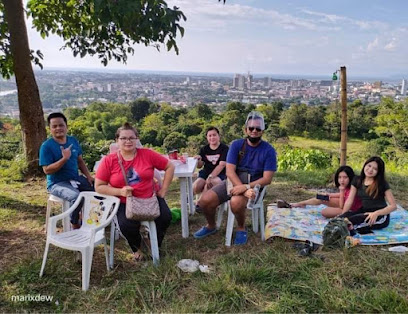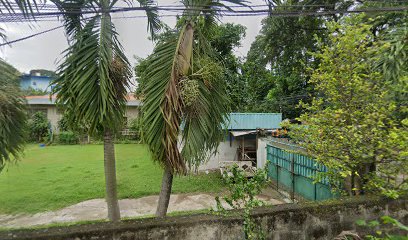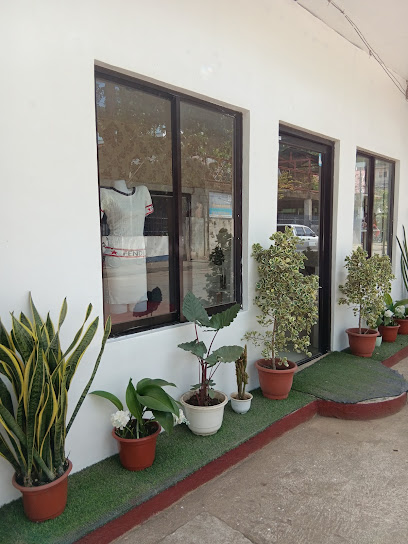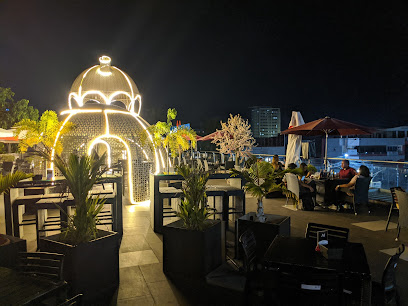
Discover the Charm of Macasandig: The Heartbeat of Cagayan de Oro
Explore Macasandig in Cagayan de Oro: A harmonious blend of nature, culture, and adventure in the heart of the Philippines.
Macasandig, a vibrant neighborhood in Cagayan de Oro, Philippines, offers a blend of urban convenience and natural beauty. Nestled along the Cagayan River, this area is known for its lush greenery, making it a perfect escape for nature lovers. The riverbank is ideal for leisurely strolls, picnics, and taking in the serene views. The neighborhood's strategic location provides easy access to various attractions, including Gaston Park and the Museum of Three Cultures. These spots offer a glimpse into the rich history and diverse culture of the region. Additionally, Macasandig is home to several local restaurants and cafes, where you can savor authentic Filipino cuisine. For the adventure-seekers, Macasandig serves as a gateway to thrilling activities like white-water rafting and zip-lining, thanks to its proximity to the Cagayan River and surrounding hills. Whether you're looking for relaxation or excitement, Macasandig has something to offer every traveler.
Local tips in Macasandig
- Visit the riverbank early in the morning for a peaceful walk and stunning sunrise views.
- Try the local delicacies at nearby eateries for an authentic taste of Filipino cuisine.
- Wear comfortable shoes if you plan on exploring the parks and river trails.
- Check the weather forecast before planning outdoor activities like white-water rafting.
- Bring a camera to capture the picturesque landscapes and vibrant local life.
Discover the Charm of Macasandig: The Heartbeat of Cagayan de Oro
Macasandig, a vibrant neighborhood in Cagayan de Oro, Philippines, offers a blend of urban convenience and natural beauty. Nestled along the Cagayan River, this area is known for its lush greenery, making it a perfect escape for nature lovers. The riverbank is ideal for leisurely strolls, picnics, and taking in the serene views. The neighborhood's strategic location provides easy access to various attractions, including Gaston Park and the Museum of Three Cultures. These spots offer a glimpse into the rich history and diverse culture of the region. Additionally, Macasandig is home to several local restaurants and cafes, where you can savor authentic Filipino cuisine. For the adventure-seekers, Macasandig serves as a gateway to thrilling activities like white-water rafting and zip-lining, thanks to its proximity to the Cagayan River and surrounding hills. Whether you're looking for relaxation or excitement, Macasandig has something to offer every traveler.
Iconic landmarks you can’t miss
Eden's Solace
Discover the serene beauty of Eden's Solace in Cagayan de Oro, a tranquil tourist attraction perfect for relaxation and nature exploration.

Mikko's City View Ridge
Discover the stunning landscapes and breathtaking views at Mikko's City View Ridge, a hidden gem in Cagayan de Oro, Misamis Oriental.

Labanan sa Cagayan de Misamis Historical Marker
Discover the rich historical significance of Cagayan de Oro at the Labanan sa Cagayan de Misamis Historical Marker, a must-visit site for culture and history enthusiasts.

Amara view
Discover the stunning vistas of Amara View in Cagayan de Oro, Misamis Oriental, where nature's beauty meets tranquil ambiance.

Casa del Chino Ygua Historical Marker
Explore the Casa del Chino Ygua Historical Marker in Cagayan de Oro for a blend of history and delicious local cuisine.

Pagtataas ng Watawat sa Cagayan de Misamis Historical Marker
Explore the Pagtataas ng Watawat, a historical marker in Cagayan de Oro that celebrates Filipino heritage and the fight for freedom.

Love Locks
Discover the romantic charm of Love Locks in Cagayan de Oro, where couples celebrate their love with padlocks and breathtaking views.

Old Abandoned Water Reservoir
Discover the haunting beauty of Cagayan de Oro's Old Abandoned Water Reservoir, a captivating historical landmark amidst nature's embrace.

Balite Tree
Explore the ancient Balite Tree in Cagayan de Oro, a historical landmark that embodies nature's beauty and cultural significance.

ForestLake
Discover the historical beauty and tranquil landscapes of ForestLake, a must-visit landmark in Cagayan de Oro, Misamis Oriental.

Unmissable attractions to see
Macahambus Cave
Discover the stunning rock formations and rich history of Macahambus Cave, an adventure-filled natural attraction in Cagayan de Oro.

CamHills - Home of Gecko Café
Discover the beauty of Cagayan de Oro at CamHills - Home of Gecko Café, where delicious local cuisine meets stunning natural landscapes.

Love Locks
Explore Love Locks in Cagayan de Oro, a romantic tourist attraction where couples can celebrate their love with unique padlocks, surrounded by scenic beauty.

Majestic Boat of Cagayan de Oro
Explore the Majestic Boat of Cagayan de Oro and immerse yourself in the rich maritime heritage of the Philippines while enjoying stunning views.

Essential places to dine
High Ridge
Discover High Ridge: Cagayan de Oro's top restaurant offering stunning views and delectable dishes perfect for any occasion.

Melquiades
Discover an exceptional dining experience at Melquiades in Cagayan de Oro, where local flavors meet creative culinary artistry.

Cuesta Roccia
Experience the best of Cagayan de Oro's culinary delights at Cuesta Roccia – where fresh flavors meet stunning views.

Jangsu Authentic Korean Restaurant
Discover authentic Korean flavors at Jangsu Authentic Korean Restaurant in Cagayan de Oro - where tradition meets taste.

Vegetarian Restaurant CDO
Discover the flavors of plant-based cuisine at Vegetarian Restaurant CDO in Cagayan de Oro – where every bite celebrates health and taste.

7 A Eatery / 7A Miner's
Experience authentic local cuisine at 7 A Eatery in Cagayan de Oro - where every dish tells a story of flavor and tradition.

Olanos Eatery
Discover culinary delights at Olanos Eatery in Cagayan de Oro—where local flavors meet international cuisine in a warm atmosphere.

AUGUSTO BIENTEA
Discover authentic Filipino snacks at AUGUSTO BIENTEA in Cagayan de Oro's vibrant culinary landscape.

Junbel's Eatery
Experience authentic Filipino cuisine at Junbel's Eatery - a culinary gem in Cagayan de Oro offering delightful flavors and welcoming ambiance.

118 Eatery
Discover exquisite local flavors at 118 Eatery in Cagayan de Oro – where every dish tells a story.

Markets, malls and hidden boutiques
Salahid Store
Explore Cagayan de Oro with ease at Salahid Store, your convenient stop for snacks, drinks, and essentials in the heart of Macasandig.

Camila’s general merchandise
Experience local flavors and culture at Camila’s General Merchandise, your go-to grocery store in Cagayan de Oro.

M & E Thrift Shop
Explore M & E Thrift Shop in Cagayan de Oro for unique bags and clothing, blending culture with sustainable shopping.

Rutches Thrift Bags
Explore a vibrant selection of affordable and stylish bags at Rutches Thrift Bags in Cagayan de Oro, your go-to shop for unique fashion finds.

Macs General Merchandise
Explore Cagayan de Oro's local charm at Macs General Merchandise, where shopping meets culture and hospitality.

gshop.cdo
Discover the charm of Cagayan de Oro at Gshop CDO, your go-to destination for unique gifts and local crafts that capture the spirit of the Philippines.

HPS Clothing Boutique and Coffee
Discover the perfect blend of fashion and flavor at HPS Clothing Boutique and Coffee in Cagayan de Oro, where style meets comfort.

Baquero's Store
Discover local treasures at Baquero's Store in Cagayan de Oro, where shopping meets authentic Filipino culture and charm.

Grande Store
Explore the vibrant Grande Store in Cagayan de Oro for unique souvenirs, local delicacies, and an authentic shopping experience.

J And S Store
Discover the local flavors and charm of Cagayan de Oro at J And S Store, your go-to general store for authentic products.

Essential bars & hidden hideouts
High Ridge
Experience the perfect blend of exquisite cuisine and breathtaking views at High Ridge in Cagayan de Oro, a must-visit culinary gem.

Sky Bar CTC
Discover the vibrant nightlife at Sky Bar CTC in Cagayan de Oro—where stunning views and exceptional drinks await you.

The Oak Room
Experience the vibrant nightlife at The Oak Room, a premier bar in Cagayan de Oro serving creative cocktails and a lively atmosphere.

My's Point Restobar & KTV
Experience the perfect blend of Filipino cuisine and karaoke fun at My's Point Restobar & KTV in Cagayan de Oro.

Superstar KTV Lounge and Club
Discover the ultimate nightlife experience at Superstar KTV Lounge and Club in Cagayan de Oro, where karaoke, dancing, and live music come together.

GAMBA SPORTS AND MUSIC BAR
Experience the lively ambiance of GAMBA Sports and Music Bar in Cagayan de Oro, where sports meet music in a vibrant setting.

Downtown Lounge CDO
Experience the vibrant nightlife of Cagayan de Oro at Downtown Lounge CDO, where sports, drinks, and socializing come together.

My's Point Rooftop Bar
Unwind at My's Point Rooftop Bar, where stunning city views meet delicious drinks in a vibrant atmosphere in Cagayan de Oro.

Hangover Resto Bar
Discover the vibrant nightlife of Cagayan de Oro at Hangover Resto Bar, where great drinks and lively atmosphere come together.

MEZZ Restobar
Discover the vibrant nightlife at MEZZ Restobar, a premier bar in Cagayan de Oro known for its unique cocktails and lively atmosphere.

Local Phrases
-
- HelloKumusta
[koo-moo-sta] - GoodbyePaalam
[paa-a-lam] - YesOo
[oh-oh] - NoHindi
[hin-dee] - Please/You're welcomeMangadye/Salamat
[man-ga-dye/sa-la-mat] - Thank youSalamat
[sa-la-mat] - Excuse me/SorryPasayloa
[pa-sai-loa] - How are you?Kumusta ka?
[koo-moo-sta ka] - Fine. And you?Maayo. Ikaw?
[maa-yo. ee-kaw] - Do you speak English?Nakahibalo ka sa Ingles?
[na-ka-hee-ba-lo ka sa ing-gles] - I don't understandDili ko kasabot
[dee-lee ko ka-sa-bot]
- HelloKumusta
-
- I'd like to see the menu, pleaseGusto ko makita ang menu, palihog
[gus-to ko ma-ki-ta ang me-nu, pa-lee-hog] - I don't eat meatDili ko mokaon ug karne
[dee-lee ko mok-a-on oog kar-ne] - Cheers!Tagay!
[ta-gai] - I would like to pay, pleaseGusto ko mobayad, palihog
[gus-to ko mo-ba-yaad, pa-lee-hog]
- I'd like to see the menu, pleaseGusto ko makita ang menu, palihog
-
- Help!Tabang!
[ta-bang] - Go away!Lakat!
[la-kat] - Call the Police!Tawaga sa Pulis!
[ta-wa-ga sa pu-lis] - Call a doctor!Tawaga sa doktor!
[ta-wa-ga sa dok-tor] - I'm lostGuba ko
[goo-ba ko] - I'm illSakit ko
[sa-kit ko]
- Help!Tabang!
-
- I'd like to buy...Gusto ko mopalit...
[gus-to ko mo-pa-lit] - I'm just lookingNagtan-aw lang ko
[nag-tan-aw lang ko] - How much is it?Tagpila ni?
[tag-pee-la nee] - That's too expensiveMahal kaayo
[ma-hal ka-ayo] - Can you lower the price?Pwede ba pababaon ang presyo?
[pwe-de ba pa-ba-ba-on ang pre-syo]
- I'd like to buy...Gusto ko mopalit...
-
- What time is it?Unsa na oras karon?
[oon-sa na o-ras ka-ron] - It's one o'clockAlas uno na
[a-las oo-no na] - Half past (10)Tunga sa napulo
[toong-ga sa na-poo-lo] - MorningBuntag
[boon-tag] - AfternoonHapon
[ha-pon] - EveningGabii
[ga-bee] - YesterdayKagahapon
[ka-ga-ha-pon] - TodayKaron
[ka-ron] - TomorrowUgma
[oog-ma] - 1Usa
[oo-sa] - 2Duha
[doo-ha] - 3Tulo
[too-lo] - 4Upat
[oo-pat] - 5Lima
[lee-ma] - 6Unom
[oo-nom] - 7Pito
[pee-to] - 8Walo
[wa-lo] - 9Siyam
[see-yam] - 10Napulo
[na-poo-lo]
- What time is it?Unsa na oras karon?
-
- Where's a/the...?Asa ang...?
[aa-sa ang] - What's the address?Unsa ang address?
[oon-sa ang address] - Can you show me (on the map)?Pwede mo ko ipakita (sa mapa)?
[pwe-de mo ko ee-pa-ki-ta sa ma-pa] - When's the next (bus)?Kanus-a ang sunod (bus)?
[ka-noo-sa ang soo-nod bus] - A ticket (to ....)Usa ka ticket (paingon sa ....)
[oo-sa ka ticket pa-ing-gon sa]
- Where's a/the...?Asa ang...?
History of Macasandig
-
Macasandig, like much of Cagayan de Oro, has roots that extend back to pre-colonial times when it was inhabited by indigenous peoples. These early settlers engaged in agriculture, fishing, and trade, utilizing the Cagayan River for transportation and commerce. The area's rich natural resources provided sustenance and livelihood, forming the foundation of the community.
-
During the Spanish colonial period in the 16th century, Macasandig became part of the expanding territories of Spanish influence. The area was strategically important due to its proximity to the Cagayan River, facilitating trade and missionary activities. The establishment of the first Catholic missions marked significant cultural changes, introducing Christianity to the indigenous population.
-
Macasandig, along with Cagayan de Oro, experienced the ravages of World War II. The area was occupied by Japanese forces, and significant battles occurred nearby. The local population endured hardships, including forced labor and displacement. The post-war period saw reconstruction efforts and a gradual return to normalcy, with Macasandig playing a role in the recovery of the wider Cagayan de Oro region.
-
The late 20th century brought significant urban development to Macasandig as Cagayan de Oro transitioned into a bustling city. Infrastructure improvements, including roads and public transport, connected Macasandig more closely with the city center. This growth attracted more residents, leading to a diverse community and the blending of various cultural influences.
-
Today, Macasandig is a vibrant neighborhood that reflects the rich cultural tapestry of Cagayan de Oro. Festivals, such as the Kagay-an Festival, celebrate local traditions, showcasing the blend of indigenous and Spanish influences. The community maintains a strong sense of identity, with local markets, food, and crafts that highlight its historical roots while embracing modernity.
Macasandig Essentials
-
Macasandig is easily accessible from other neighborhoods in Cagayan de Oro. From the city center, you can take a jeepney (local minibus) or a tricycle, both of which operate frequently and cost very little. If you're arriving from Laguindingan Airport, taxis and shuttle services are available that can take you directly to Macasandig, with travel times ranging from 30 minutes to an hour, depending on traffic.
-
Macasandig is a relatively compact neighborhood, so walking is a great way to explore its attractions. For longer distances, jeepneys are the most common and affordable mode of public transport. Tricycles are also available for short trips, and they can navigate through narrow streets. Biking is an option as well, with some locals using bicycles for commuting.
-
Macasandig is generally safe for tourists, but standard precautions should be observed. Avoid walking alone at night in poorly lit areas, especially near the riverbanks. Be cautious in crowded places such as markets, where petty theft can occur. Areas around the train station and certain back streets might have higher crime rates, so it is advisable to stay alert and avoid these locations after dark.
-
In case of an emergency, dial 911 for police or medical assistance. Local hospitals and clinics are available for urgent care. It is recommended to have travel insurance to cover any medical emergencies. For non-urgent issues, pharmacies are spread throughout Macasandig where over-the-counter medications can be purchased.
-
Fashion: Do dress modestly, especially when visiting religious sites or local homes. Avoid revealing clothing. Religion: Do respect local customs, particularly during prayer times. Public Transport: Do be courteous and offer your seat to the elderly. Don't eat or drink on public transport. Greetings: Do greet locals with a smile and a friendly 'hello.' A slight nod or bow can be a sign of respect. Eating & Drinking: Do try local specialties and accept food offerings. Don't refuse food or drink, as it can be perceived as rude.
-
To experience Macasandig like a local, visit the local markets where fresh produce and traditional Filipino goods are sold. Engage with the vendors; they are often willing to share insights about their products. Don't miss trying local delicacies such as 'lechon' (roasted pig) and 'pancit' (noodles). If you have the chance, attend local festivals or community events for an authentic cultural experience.
Nearby Cities to Macasandig
-
Things To Do in Camiguin
-
Things To Do in Bohol
-
Things To Do in Davao City
-
Things To Do in Siargao
-
Things To Do in Cebu City
-
Things To Do in Zamboanga City
-
Things To Do in Boracay
-
Things To Do in Legazpi
-
Things To Do in Puerto Princesa
-
Things To Do in Palawan
-
Things To Do in Tagaytay
-
Things To Do in Manado
-
Things To Do in Sandakan
-
Things To Do in Manila
-
Things To Do in Subic






